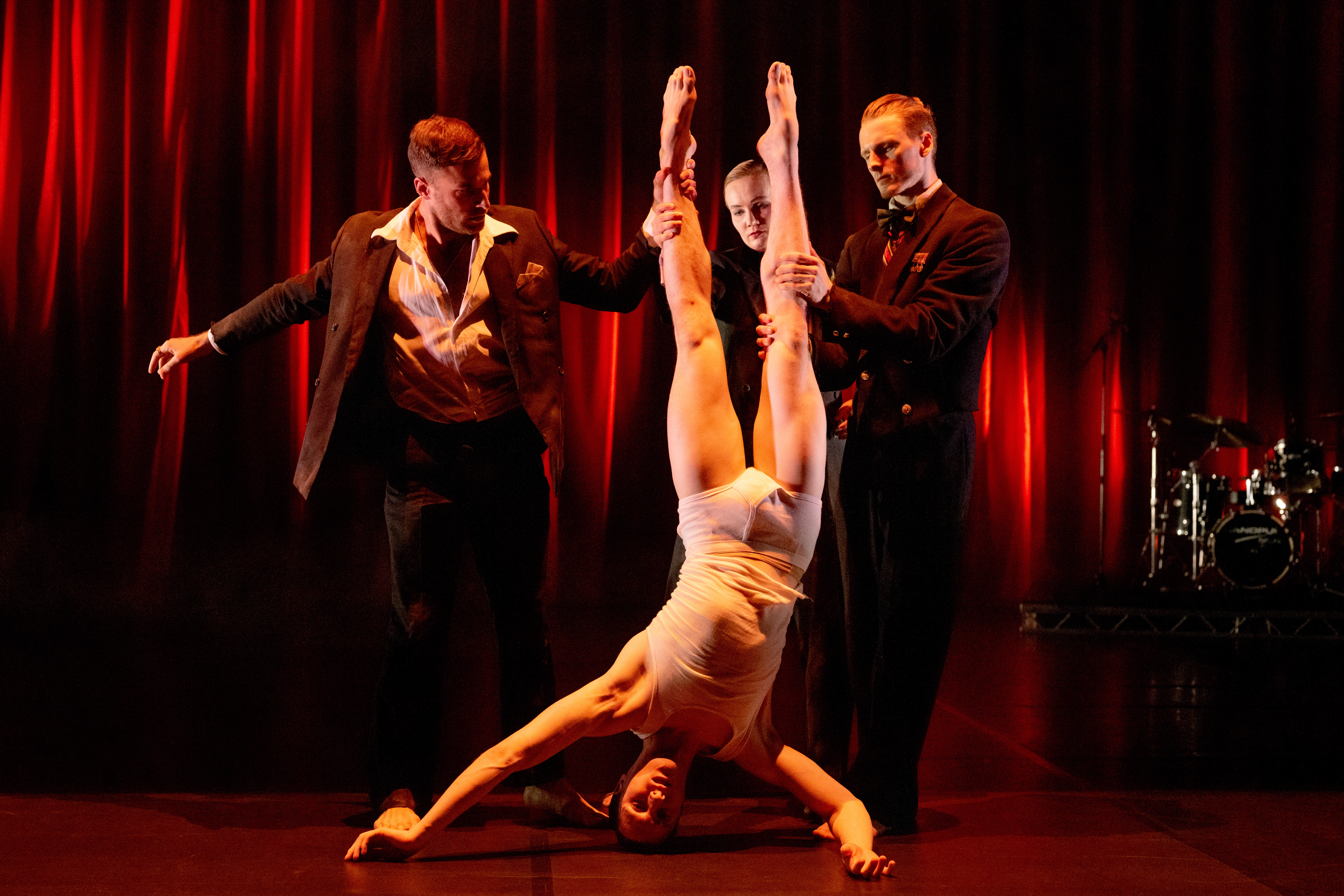Words by Bengi-Sue Sirin.
Rambert’s recent double bill, Death Trap, is on paper right up my street not only because of its interrogation of the morbid. The first piece ‘Cerberus’ is inspired by the Eurydice myth, and its follow-up ‘GOAT’ based on the glorious Nina Simone. What a line-up! Considering they are both choreographed by Ben Duke, who comes at dance with a literary bent (he has a First in English Literature), I feel in safe hands. Dance and language – my two passions! And on Rambert dancer bodies too… In homage to the late Matthew Perry, could this show BE any more exciting?
‘Cerberus’ begins with a drum roll. Against a black backdrop, with a feather-plumed dancer who looks plucked straight from a gothic masquerade ball. She moves from stage left to right with fierce resolve, suspending a thick horizontal rope from her torso. A man with a torch headlamp follows in similar manner. Accompanied by atmospheric drumming, it is all quite underground hellish, but captivating.
“Two dancers, would round each other like the colours in a stick of rock”
Suddenly everything turns red and a host of Rambert dancers enter and put down chairs. They mostly wear black, with a measure of white thrown in. I think of the White Stripes and David Lynch’s Twin Peaks, tonally as well as visually. This parallel is enhanced when the incredible dancer Musa Motha makes his way to the front, and is joined by what seems to be a stage compere/translator hybrid? As they begin to interact, we learn that Motha is the Orpheus character, pining and emotional, and this second man is a sort of comic counterpart, repeating what Motha says in a lighter and funnier way. With this, the tone of ‘Cerberus’ is established. I like the pace – I find myself anticipating the underworld-driven crossings of the [almost] dead, and the breakings up of these by comedic interludes.
There are some really stunning moments in ‘Cerberus.’ I especially like the moody duet which makes me think of waltzes in the Weimar and sad cabarets. The stooped couple dance as if for the last time, wound tightly round each other like the colours in a stick of rock. After these poignant moments of final connection, it is even more of a brutal juxtaposition to see the cast later trudging, ropebound, one by one, in the direction of hell. They are spaced out and disparate, total separate entities. Suddenly, one person appears travelling in the other direction, pulling the rope himself. It is Orpheus, and he is attempting to rescue his Eurydice. He makes it ¾ of the way until….. You guessed it, and we all did too. But before we could see what happened, the lights went out. I never wanted to see the next three minutes of a piece more. It was marvellous.

And from the past into the present. Piece number two was Duke’s 2017 ‘GOAT.’ In what I discern is Duke’s style, it also opened informally, using (somewhat) comedic dialogue to set the scene. This time we had a live TV reporter who put me in mind of an aspiring Nathan Fielder. Dancers were here and there around a 70s era town hall, sort of secondary players. I know ‘GOAT’ is labelled a piece of dance theatre, nonetheless it was a bit of a slow start to see some movement. When movement occurred, it did amuse me – pretty tongue in cheek, Gotye music video style, rather like the brilliant dance scene in Dogtooth. But then the reporter would sort of incessantly hound them with questions like ‘What’s this about?’ and I found it hard to compute. My shortcoming, possibly. I must say that while I loved ‘Cerberus’ I found ‘GOAT’ a bit lower on the enjoyment spectrum, but as always hats off to a choreographer doing their own thing, and bravo to the enviable talent of the Rambert dancers, a joy to see them always.
